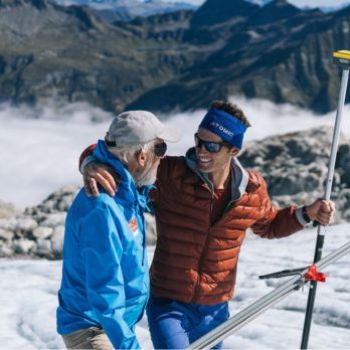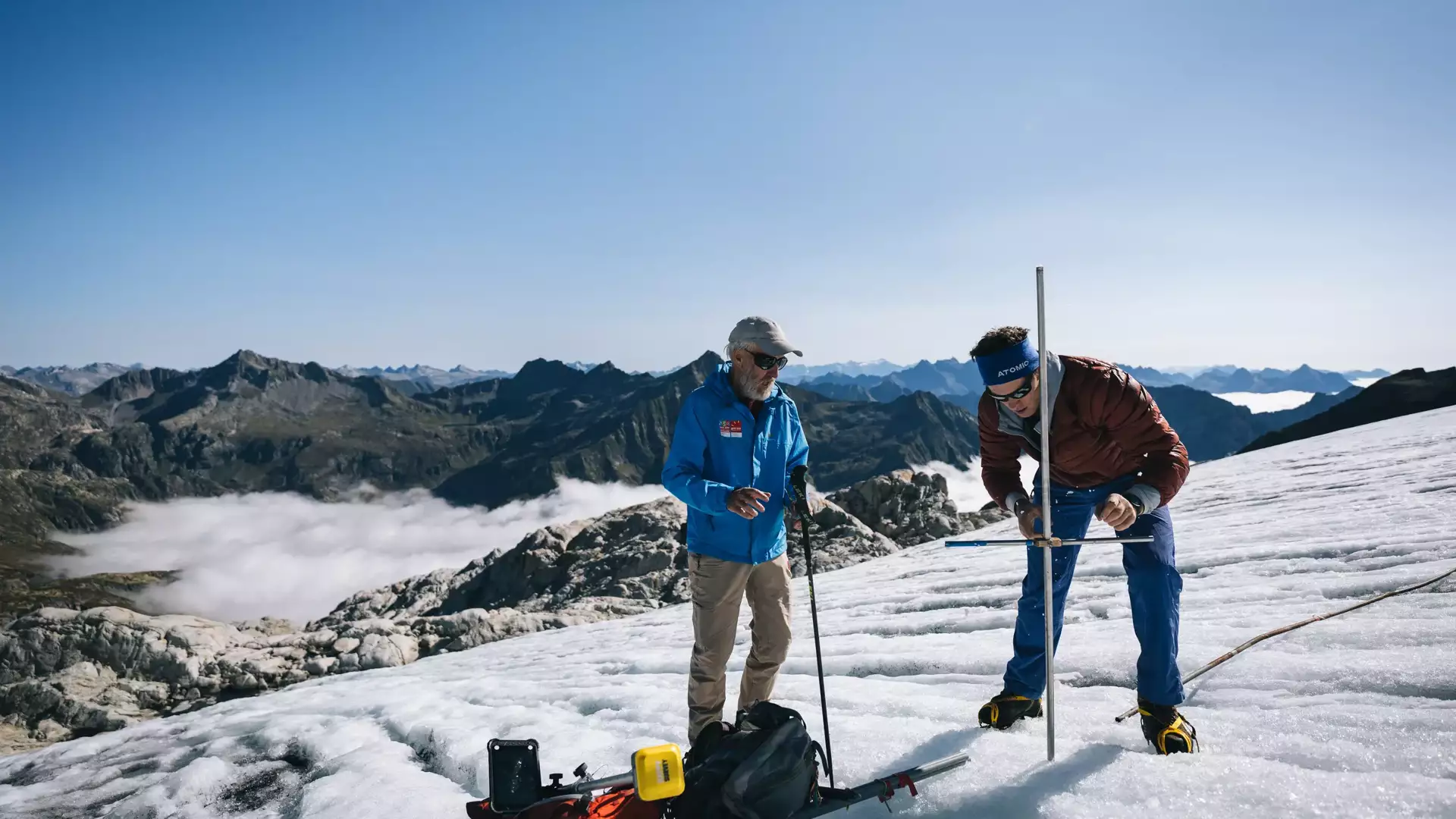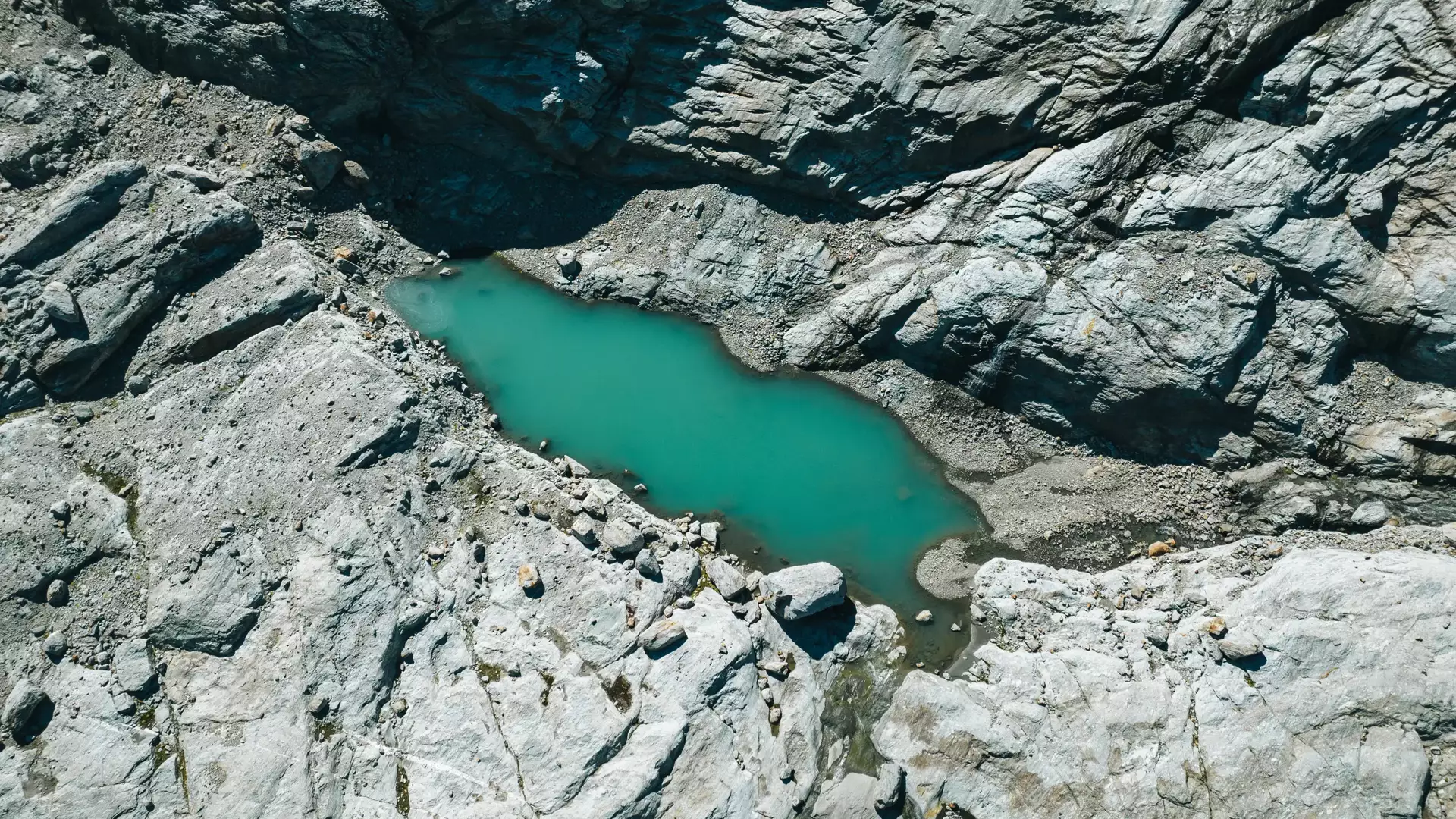From the exotic palms lining the shores of Lake Maggiore, to the rocky white crests of the glaciers. Ticino’s landscape is varied and packed with contrasts. There is no question that the Basòdino glacier deserves a visit.
THE CHARACTER
Giovanni Kappenberger e Mattia Soldati, glaciologist and Forestry Department employee.
We recommend the Basodino glaciological trail to everyone: it’s stunning and introduces you to the essence of the glacier.













